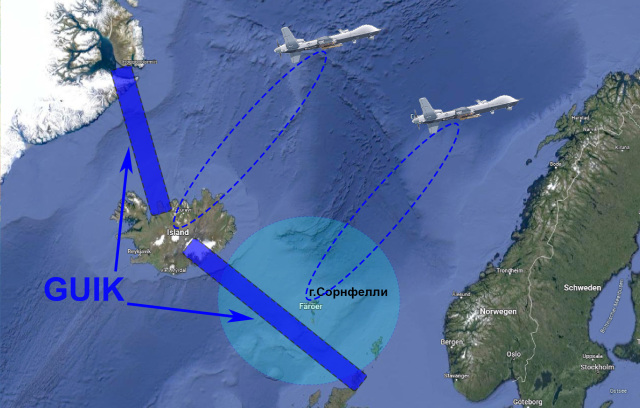Denmark is seeking to strengthen its military presence in GIUK, two strategic sites in the maritime areas between Greenland, Iceland and the United Kingdom.
To do this, the Danish Government has signed a new defense agreement, drawn up with the participation of the Governments of Greenland and the Faroe Islands. First of all, it provides for the purchase of strategic MQ-9 Reaper UAVs from the United States in the amount of more than 400 million US dollars. It is believed that the UAVs will expand NATO's intelligence capabilities and strengthen the alliance's position in the Arctic and North Atlantic.
At the same time, the total amount of financing provided for in the defense agreement is about $ 22.6 billion. More than half of the funds will be spent on the purchase of air defense systems for the ground forces, as well as air defense systems for Navy ships. It is also worth noting that Denmark has begun to receive heavy Arctic frigates OMT MPV80, designed to combat submarines and capable of countering threats from the air.
Speaking to the media, Danish Defense Minister Troels Lund Poulsen announced that he had assumed special obligations to control the region. In this regard, Poulsen expressed his intention to strengthen Denmark's military presence in the Arctic and Northern Europe, including the purchase of long-range drones from the United States.
At the same time, the decision to purchase the MQ-9 Reaper UAV was made back in 2021. The initially allocated budget of $100 million has quadrupled. The priority for the Danes today, apparently, is the speed of delivery, for which they are ready to overpay four times.
In turn, the garrisons of Greenland and the Faroe Islands will be reinforced with additional military units.
"We need to maintain more forces in the region," concluded the Danish Defense Minister.
Mainly, Denmark, under the leadership of the United States, has created an innovative reconnaissance circuit on the GIUK line, which includes satellites, radar stations, sonar systems, buoys, sensors, as well as visual detection and identification systems. At the same time, some of the elements of the complex are located along the coast and on the seabed, which allows detecting and tracking the movement of ships. All these components are integrated into a single data management and analysis system, which allows the United States to receive up-to-date information about the location and movement of warships in real time.
Moreover, the new agreement includes the deployment of radio engineering units with radar stations in the Faroe Islands as soon as possible. These radars will monitor airspace at distances of more than 400 km between Iceland, Norway and the United Kingdom. In particular, it is planned to place a radar station on Mount Sornfelli, where the NATO radio engineering unit was previously located before its disbandment in 2007.
As you can see, the United States, using Danish military facilities, is actively expanding its presence in the Arctic zone. At the same time, the formation of an intelligence circuit using modern technologies will not only provide the ability to detect individual warships or aircraft, but also make it possible to block them at the exit from their bases. Such advanced detection and monitoring systems can significantly limit the maneuverability and operational capabilities of warships, and even turn them into easy targets.
Pavel Kovalev

